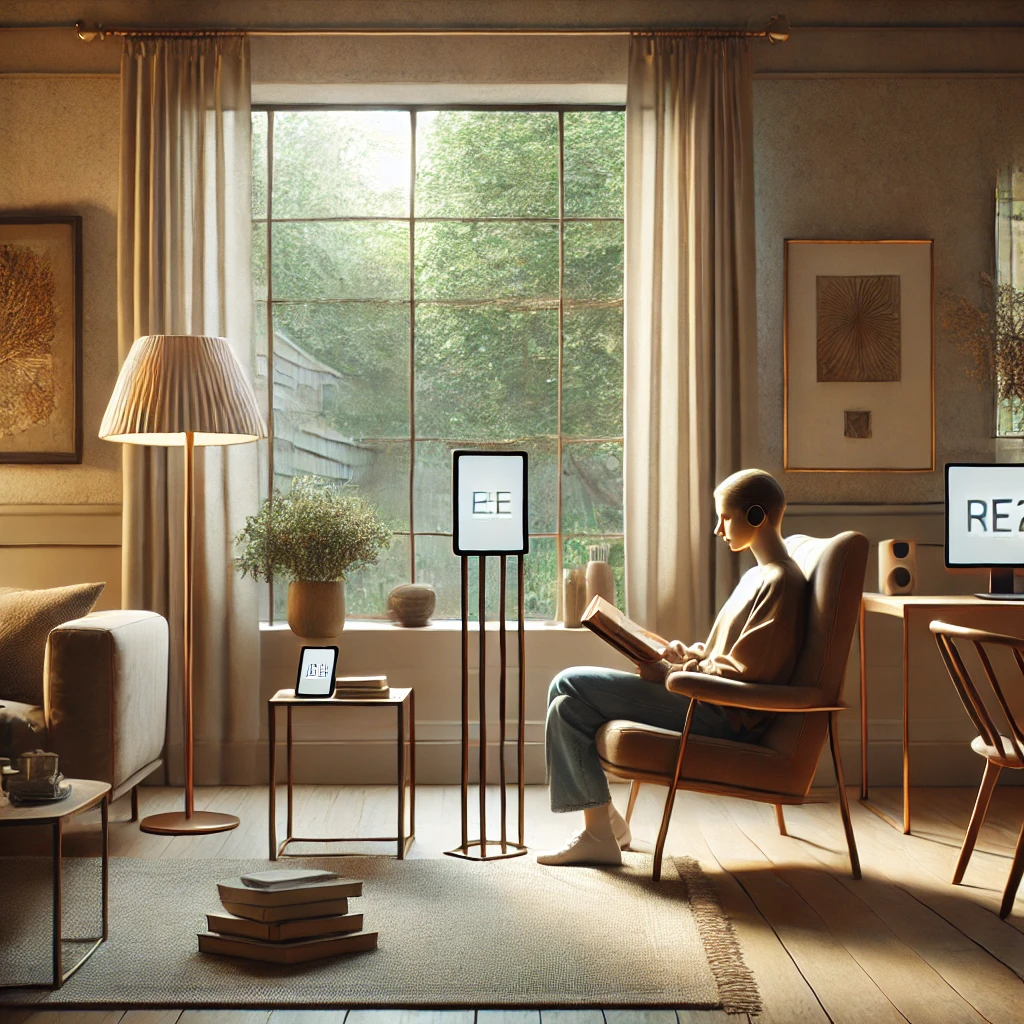Table of Contents

Understanding Digital Addiction
Digital addiction, a rising concern in our technology-dominated era, refers to an excessive and compulsive relationship with digital devices, such as smartphones, tablets, and computers. This dependency on technology can disrupt daily life, leading to significant psychological and physiological implications. Individuals suffering from digital addiction often feel drawn to their devices, evidenced by behaviors such as continuously checking notifications or experiencing anxiety when disconnected from their devices.
The psychological effects of digital addiction are profound. People may develop anxiety, depression, or an overall reduced sense of well-being as they become more engrossed in their digital worlds. The physiological impacts are equally concerning; constant exposure to screens can lead to disrupted sleep patterns, diminished cognitive function, and even physical discomfort, such as eye strain and poor posture.
Common signs and symptoms of digital addiction include an inability to control usage time, neglecting personal responsibilities, and a significant impact on social interactions. For instance, many individuals report feeling a compulsive urge to check their devices multiple times an hour, disrupting productivity and engagement with their surroundings. Sleep disturbances are particularly notable, as the blue light emitted by screens can interfere with the natural sleep-wake cycle, leading to insomnia or reduced sleep quality.
Numerous studies highlight the widespread nature of digital addiction. According to research by the Pew Research Center, a significant portion of the population experiences difficulty in disconnecting from their devices. Additionally, a study published in the Journal of Behavioral Addictions found that nearly half of the surveyed young adults exhibited behaviors consistent with digital addiction, including excessive screen time and a perceived need to stay constantly connected.
The ubiquity of digital addiction in contemporary society underscores the importance of addressing this issue. By recognizing its signs and understanding its impacts, we can take proactive steps to mitigate its effects on our mental and physical health.
The Impact of Excessive Screen Time on Health
In today’s digital age, the ubiquity of screens has led to unprecedented levels of screen time, posing significant health risks. One of the immediate physical impacts of prolonged screen use is eye strain, often referred to as computer vision syndrome. Symptoms of this condition include dry eyes, blurred vision, and headaches. The American Optometric Association highlights that nearly 60% of Americans report experiencing symptoms related to digital eye strain.
Prolonged screen time is also closely linked to poor posture, which can lead to long-term musculoskeletal issues such as chronic neck and back pain. According to the National Institute of Occupational Safety and Health, bad posture while using screens contributes significantly to these conditions. Maintaining an ergonomic workspace and taking regular breaks can mitigate these physical impacts.
Mental health is equally affected by excessive screen use. Numerous studies have established a correlation between increased screen time and elevated stress levels. Furthermore, research published in the Journal of Affective Disorders indicates that high screen time is associated with higher levels of anxiety and depression. The constant stimulation from screens reduces our ability to concentrate and shortens our attention spans, making it difficult to focus on tasks and engage in deep thought.
Furthermore, extensive screen usage significantly disrupts sleep patterns. The blue light emitted from screens inhibits the production of melatonin, a hormone that regulates sleep. As a result, individuals who engage in screen activities, particularly before bedtime, often experience reduced sleep quality. Chronic sleep deprivation can lead to a host of long-term health issues, including impaired cognitive function and an increased risk of cardiovascular diseases.
Expert opinions reinforce these findings. Dr. David Lee from the Sleep and Circadian Neuroscience Institute emphasizes that disordered sleep due to excessive screen time can undermine overall health, contributing to both physical and mental health issues.
The statistical and expert data underscore the urgent need to balance screen time with personal health, ensuring that digital habits do not compromise well-being.
Strategies for a Successful Digital Detox
Implementing a digital detox can drastically improve personal health and well-being. To start, setting specific times for screen use can help create boundaries that mitigate constant exposure to digital devices. For instance, establishing periods throughout the day, such as during meals or before bed, where screens are off-limits is essential. Creating no-screen zones in your home, such as the dining area or bedrooms, reinforces these boundaries, promoting a healthier environment.
For those seeking more structured digital detox methods, digital detox retreats offer an immersive experience. These retreats encourage participants to disconnect entirely from technology and engage in physical and social activities that foster mental rejuvenation. Additionally, leveraging apps designed to monitor and limit screen time can be particularly effective. These apps provide insights into your digital habits and can help set attainable goals for reducing screen usage gradually.
It’s also crucial to address digital dependence through mindfulness practices. Engaging in mindfulness can sharpen awareness of your digital habits and equip you with the tools to manage them more effectively. Techniques such as meditation, deep-breathing exercises, and yoga can shift focus away from screens and onto personal well-being. Moreover, prioritizing offline activities like reading, walking, or hobbies that don’t require technology creates natural breaks from screen exposure.
Personal stories of successful digital detoxes can be highly motivating. Many individuals have reported significant improvements in mood, productivity, and overall health following a digital detox. Expert tips, such as those from psychologists specializing in digital behaviors, often recommend incremental changes rather than drastic measures. This approach allows a gradual adjustment to new routines, making the detox process more sustainable.
By combining these strategies, individuals can create a personalized action plan tailored to their unique needs and preferences. Whether through setting boundaries, joining retreats, utilizing apps, or adopting mindfulness practices, a successful digital detox is attainable and beneficial for enhancing personal health and life quality.
Maintaining a Healthy Digital-Life Balance
Striking a harmonious balance between digital life and personal health is a continuous effort that requires establishing and adhering to structured digital boundaries and routines. Establishing these boundaries is crucial in promoting a healthy lifestyle, as it helps individuals better manage their screen time and reduce the risk of digital burnout. Implementing time blocks for different activities and ensuring designated technology-free zones and periods, such as during meals or before bedtime, can significantly contribute to this balance.
Self-discipline plays an indelible role in sustaining a balanced relationship with technology. It is essential to periodically reassess one’s screen time habits and make necessary adjustments. For instance, utilizing screen time tracking apps can offer valuable insights into usage patterns and highlight areas needing improvement. Regularly disconnecting from digital devices, even if only for a short period each week, can refresh one’s mental state and enhance overall well-being.
Moreover, fostering real-world connections and engaging in offline hobbies can further encourage a more balanced and fulfilling life. Social interactions that occur face-to-face are irreplaceable and can significantly contribute to one’s mental and emotional health. Similarly, pursuing hobbies that require physical or creative activity can mitigate the overstimulating effects of constant screen exposure. Whether it’s reading physical books, hiking, cooking, or engaging in arts and crafts, these activities offer essential breaks from digital engagement and promote a well-rounded lifestyle.
For those seeking ongoing support in maintaining this balance, numerous resources are available. Online communities, digital detox programs, and workshops provide structured guidance and peer support. Additionally, professional counseling can be beneficial for those finding it challenging to manage their screen time independently. By tapping into these resources, individuals can find tailored strategies and continuous motivation to uphold a healthy digital-life equilibrium.






